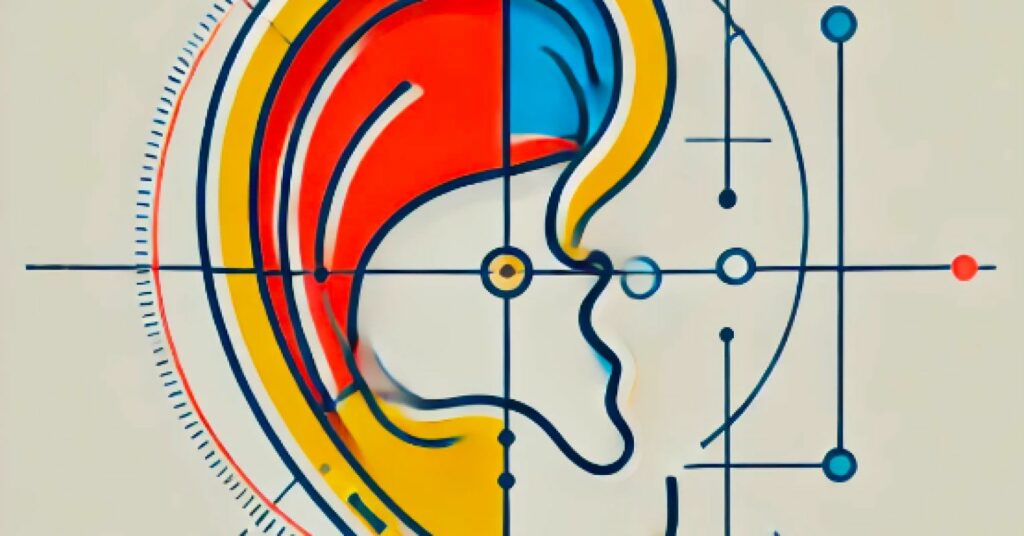Source: DALL-E / OpenAI
Let’s cut to the chase: Cognitive function tends to decline when sensory stimulation to the brain is reduced. In this context, the adage “Use it or lose it” carries significant weight. A recent study examining hearing loss and cognitive impairment reinforces the connection between sensory engagement and cognitive resilience. Clearly, the utility of a hearing aid goes far beyond merely amplifying sound.
And that got me thinking. Perhaps we can look beyond traditional interventions like hearing aids to explore a new horizon in cognitive preservation: the role of large language models (LLMs) as tools for sustained and tailored cognitive stimulation. Maybe we can even call them “thinking aids.”
The Cognitive Impact of Sensory Engagement
The study on hearing loss and cognition underscores a crucial point: Sensory input is a key driver of cognitive connectivity. As we age, sensory deficits like hearing loss can lead to reduced cognitive function, highlighting the importance of maintaining mental stimulation throughout life. However, the solution may not lie solely in the physical aids we traditionally rely on (such as hearing devices) but rather in how we engage the mind in meaningful activities like reading.
Here, the phrase “Use it or lose it” gains nuance. The decline in cognitive function isn’t just about a physical sensory deficit; it may be also about a lack of cognitive exercise. Hearing loss may limit social interaction, which, in turn, reduces cognitive engagement. This is where technology, specifically LLMs, could fill a gap.
LLMs as “Thinking Aids” and Beyond
LLMs represent a new frontier in fostering cognitive engagement. Unlike static interventions, LLMs offer a dynamic, iterative experience that can be fine-tuned to an individual’s cognitive needs. From casual conversation to deep philosophical discussion, LLMs provide a rich spectrum of interactions designed to stimulate various aspects of cognition.
Traditional methods of cognitive engagement, like puzzles or reading, are effective but often limited in their interactivity and adaptability. LLMs, however, have the potential to act as personalized cognitive coaches. They can adapt their complexity, tone, and subject matter based on an individual’s interests, attention span, and cognitive capabilities. This adaptability creates a unique form of “cognitive jazz”—an improvisational interplay of ideas that keeps the mind agile and engaged.
Cognitive Connectivity in Action
Imagine an elderly individual engaging in daily conversations with an LLM, ranging from discussing the latest news to exploring historical events in depth. The LLM isn’t just serving static information; it’s responding, challenging, and even provoking new lines of thought. This interactive process could foster a form of cognitive connectivity that mimics social interaction—a critical factor in cognitive health.
Moreover, the LLM can help identify and bridge cognitive gaps. By noting patterns in a person’s responses, such as hesitations or frequent forgetfulness, it could subtly guide conversations toward topics that strengthen weak areas of cognition. This approach moves beyond simple exercises; it creates an ongoing, evolving dialogue that adapts to the user’s cognitive needs.
From Play to Deep Thought: The Iterative Learning Model
The beauty of LLMs lies in their versatility. They can engage in playful banter, solving riddles or creating stories—activities that spark joy while also engaging critical cognitive functions like memory, reasoning, and creativity. On the other end of the spectrum, LLMs can dive into complex topics, encouraging users to reflect, question, and synthesize information.
Cognition Essential Reads
This iterative learning model aligns perfectly with the “lifelong learning” concept. Cognitive health isn’t merely about maintaining sharpness; it’s about embracing continuous growth. LLMs, with their ability to shift from light-hearted conversation to deep analysis, can be powerful allies in keeping the mind not just active but curious and adaptable.
Confronting Cognitive Isolation
The use of LLMs as tools for cognitive engagement could help with our approach to cognitive decline. Traditional interventions, like hearing aids, address the sensory deficits that may contribute to cognitive impairment. However, LLMs go a step further by engaging the mind directly, adapting to individual needs in real time, and fostering a dynamic interplay of ideas.
Monitoring cognitive function, as suggested in the recent study, is indeed valuable. But what if we also had tools that actively stimulate and sustain cognitive connectivity? The LLMs’ potential to personalize and adapt cognitive experiences means they could serve as more than just monitoring tools—they could become catalysts for lifelong cognitive fitness.
Thinking and a Future of Cognitive Well-Being
The emerging role of LLMs in cognitive health represents a shift from passive intervention to active engagement. By providing tailored, iterative interactions that range from simple play to deep intellectual stimulation, LLMs could help keep our cognitive faculties in tune. They have the potential to drive cognitive fitness and promote lifelong learning, creating a robust buffer against decline. And, of course, it is a tremendous opportunity for clinical research.
By integrating LLMs into our daily lives, we might find that the key to cognitive health isn’t just in mitigating sensory deficits, but in nurturing a lifetime of curiosity and connection.
Source link : https://www.psychologytoday.com/za/blog/the-digital-self/202410/are-large-language-models-the-new-thinking-aids
Author :
Publish date : 2024-10-03 14:37:46
Copyright for syndicated content belongs to the linked Source.
